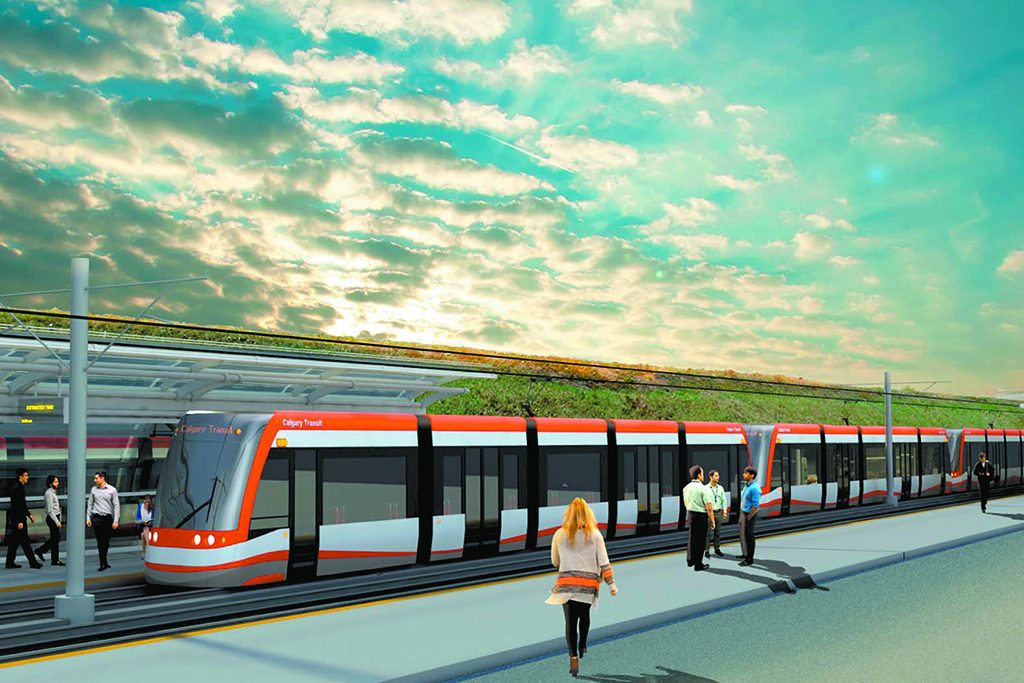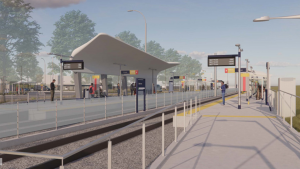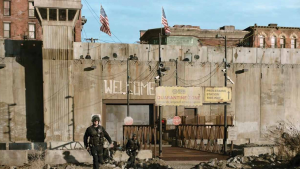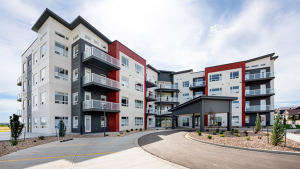A group of citizens and prominent business leaders in Calgary want the city to put the brakes on a proposed $4.65-billion Green Line LRT for a year to rethink the risks and costs associated with the mega-project.
The group, led by veteran oilman Jim Gray, fears the venture could go over budget by as much as $2 billion and become an economic catastrophe that could have overwhelming impacts for a generation.
“What we want them to do in that year,” he said, “is to do the detailed planning, accommodate the risk in the financial plans and we want to develop a very significant degree or certainty because if this thing goes in the ditch it is so big that it’ll take the whole city into the ditch with it.
“We’re not here just to stop things. But Calgary cannot afford to stumble on this enormous project.”
Gray spoke about the project at city council’s transportation committee recently, and urged a halt to the venture so due diligence and an in-depth review of the financial projections could be carried out.
Since then, city councillor Evan Woolley has tabled a motion directing administration to pause work on the project and work with an independent third party to do a review of any possible alignment changes and escalating project costs. City council is expected to debate the motion July 22.
Gray said the group arrived at the $2-billion potential overrun figure from risk estimates in reports prepared for the city by Hatch Engineering and Stantec Inc. professional services company.
“Their external experts, Hatch and Stantec, said, ‘Yes, you can build it at $4.65 billion with a 50 per cent upside risk,’” explained Gray. “Now $4.65 billion plus 50 per cent of $4.65 billion is $7-billion.”
The group feels more public discussion on the project is necessary in light of the potential for huge cost overruns, especially on a proposed tunnel and the alignment in the downtown, and wants a specific cost estimate on the south portion of the line from the centre of the city to outside of Calgary.
Gray said the citizens group deserves a seat at the table because the project is funded equally by the federal government, the province and City of Calgary.
“Every nickel over affects the Calgary taxpayer and we’re taxpayers and that’s why we believe the buck stops with us. We’re the ones paying the bill, therefore we should have a place at the table.
“We’re not saying we have all the answers, but we do have questions to ask and I think it’s legitimate that taxpayers ask these questions.”
The Green Line is Calgary’s biggest-ever infrastructure project that will ultimately stretch 46 kilometres. For now, only the first 20-kilometre phase has been approved.
The city said in a press release following the recent transportation committee meeting that its top priority is to build the Green Line within a budget of $4.9 billion and maintain the project vision to build a transit service that connects existing communities in north and southeast Calgary.
“The Green Line is an important strategic project for the City of Calgary that will help move people across the city to different economic centres like the downtown core and Quarry Park,” the statement said.
The city said it has worked over the last year and a half to refine the Green Line design, specifically a tunnel portion between 16 Avenue and 4 Street S.E., and has worked closely with industry experts and is thoroughly evaluating all possible risks, including technical, financial and scheduling.
Based on its analysis, the city said it will be investigating ways to shorten the tunnel portion and bring as much to the surface as possible.
Sixteen kilometres of the project is ready to be built, the city said, and request for qualifications will be released soon for a portion of the project between 4 Street S.E. and 126 Avenue S.E.
The project team warned in a report to the transportation committee that a recent scan of the construction market indicates that mega-projects across the country have experienced “significant challenges” because the size of the procurement packages impact the attractiveness for bidding.
The report noted that the first stage of the project will provide 20,000 direct and indirect jobs and land values around stations are expected to experience property value uplift of $1.92 billion by 2046.
Gray said the group is particularly concerned about the proposal to build a tunnel or tunnels deep under the Bow River and the city because it is technically challenging and difficult due to the ground conditions. He noted that other cities that have embarked on similar ventures have had problems.
“Calgary is built on a river flat so there’s great technical challenges in putting two four-kilometre tunnels underneath the Bow River,” he said. “They have tremendous problems just building garages in Calgary because there’s water problems, sloughing shale, sand and water-saturated sands.”
Plans call for putting a tunnel or tunnels into the bedrock and building stations the equivalent of 14 parking levels underground, which is a very technical and challenging initiative, said Gray.
“You don’t build tunnels unless you don’t have other options. They’re highly complex and we’re very familiar with what happened in Boston, we’re very familiar with what happened in San Francisco and Seattle, and we also know there are big troubles in London, England, with tunnels. It’s particularly technically challenging here because of the river deposits that we have to go through.”
Calgary is in a very stressed position right now, Gray said, as 100,000 people have lost their jobs and 27 per cent of downtown buildings are empty.
“So, we just want to pause and say, ‘Look, we cannot afford to stumble on this project. It would have overwhelming impacts for a generation on Calgary and we just can’t tolerate that. With these mega-projects it’s terribly important to do the pre-planning because once you get started you can’t stop them.”











Recent Comments
comments for this post are closed